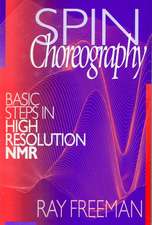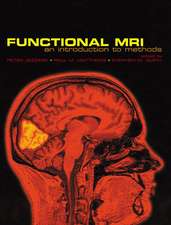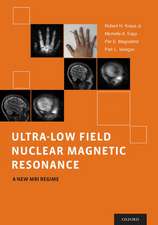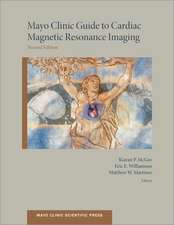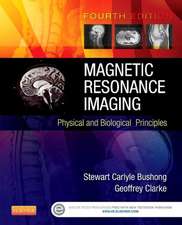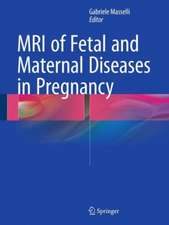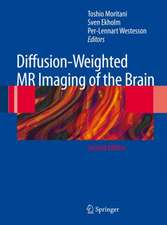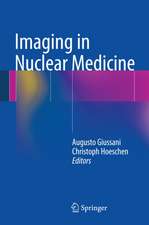Magnetic Resonance in Chemistry and Medicine
Ray Freemanen Limba Engleză Paperback – 24 apr 2003
Preț: 454.72 lei
Preț vechi: 663.36 lei
-31% Nou
Puncte Express: 682
Preț estimativ în valută:
87.04€ • 94.57$ • 73.16£
87.04€ • 94.57$ • 73.16£
Carte tipărită la comandă
Livrare economică 09-15 aprilie
Preluare comenzi: 021 569.72.76
Specificații
ISBN-13: 9780199262250
ISBN-10: 019926225X
Pagini: 290
Ilustrații: numerous figures and line drawings
Dimensiuni: 157 x 234 x 17 mm
Greutate: 0.46 kg
Editura: OUP OXFORD
Colecția OUP Oxford
Locul publicării:Oxford, United Kingdom
ISBN-10: 019926225X
Pagini: 290
Ilustrații: numerous figures and line drawings
Dimensiuni: 157 x 234 x 17 mm
Greutate: 0.46 kg
Editura: OUP OXFORD
Colecția OUP Oxford
Locul publicării:Oxford, United Kingdom
Recenzii
As the exposure of the wider scientific community (and the general public) to these techniques continues to increase, this book should be welcomed as a valuable way of making the basic physics behind them understandable to as wide an audience as possible.
Particularly welcome is an accessible yet authoritative discussion of the possible physiological effects of uniform magnetic fields, radio frequency radiation and magnetic field gradients.
The text is clear and well written, at a level accessible to anyone with a degree level background in physical science. No prior knowledge of any branch of magnetic resonance is assumed, and the amount of mathematics is kept to an absolute minimum ... This should not, however, be regarded just as a book for complete novices. It is instructive for anyone with knowledge of one area of magnetic resonance to see the parallels and differences between the two areas clearly explained by Professor Freeman.
This book represents a unique contribution to the literature and fills a niche in the genre of magnetic resonance textbooks. It should prove useful to chemistry students looking to apply MR to their research or to anyone desiring a basic description of magnetic resonance from a chemistry perspective.
... useful in virtually all specialities that require a knowledge of chemistry in the process of diagnosis. The author is a most credible authority on the subject matter presented in the book.
Particularly welcome is an accessible yet authoritative discussion of the possible physiological effects of uniform magnetic fields, radio frequency radiation and magnetic field gradients.
The text is clear and well written, at a level accessible to anyone with a degree level background in physical science. No prior knowledge of any branch of magnetic resonance is assumed, and the amount of mathematics is kept to an absolute minimum ... This should not, however, be regarded just as a book for complete novices. It is instructive for anyone with knowledge of one area of magnetic resonance to see the parallels and differences between the two areas clearly explained by Professor Freeman.
This book represents a unique contribution to the literature and fills a niche in the genre of magnetic resonance textbooks. It should prove useful to chemistry students looking to apply MR to their research or to anyone desiring a basic description of magnetic resonance from a chemistry perspective.
... useful in virtually all specialities that require a knowledge of chemistry in the process of diagnosis. The author is a most credible authority on the subject matter presented in the book.
Notă biografică
Ray Freeman read chemistry at Oxford University and completed his doctorate with R. E. Richards on nuclear magnetic resonance (NMR) spectroscopy. After two years' postdoctoral research at the French Atomic Energy Commission at Saclay, France, he moved to the National Physical Laboratory in Teddington, Middlesex. In 1961 he joined Varian Associates in Palo Alto, California, and worked on the methodology of NMR, the design of commercial NMR spectrometers, and the development of new Fourier transform techniques. In 1973 he was appointed Lecturer at Oxford University and a Tutor and Fellow of Magdalen College, building up a research group on NMR methodology in the Physical Chemistry Laboratory. He was elected Fellow of the Royal Society in 1979. In 1987 he was appointed to the John Humphrey Plummer chair of Magnetic Resonance in the University of Cambridge, and Fellow of Jesus College, Cambridge.

